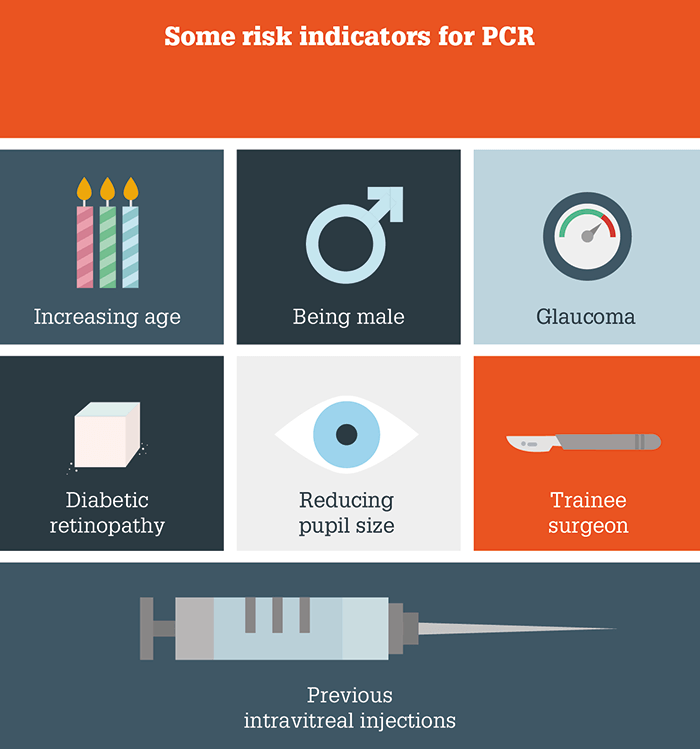
Posterior capsule rupture (PCR) occurs in around 2 percent of patients undergoing cataract surgery (1). But who is most at risk? Multiple indicators have already been identified, but new research is providing further evidence that previous intravitreal injections might need adding to the list (Figure 1).
A team from Moorfields Eye Hospital recently published the research online – and the study’s findings came as a surprise to Zaid Shalchi, lead author of the corresponding paper (2). “I was adamant that there is no reason why injected eyes should have a higher risk of PCR and wanted to prove myself right. How wrong I was!” says Shalchi. Using the Moorfields Patient Administrative System and OpenEyes electronic databases, the team retrospectively analyzed all cataract surgeries between January 1, 2012 and August 31, 2015 for incidence of PCR – a total of 62,994 procedures. They found that prior intravitreal injections were associated with a higher risk of PCR (odds ratio, 1.66; p=0.037), in accordance with previously published studies (3), (4). However, the team did not identify any risk factors in the prior injection cohort, unlike Lee et al., (3) who identified that risk increased with the number of previous injections. The team write that their findings “may indicate that a single intravitreal injection is sufficient to disrupt lens capsule/vitreous anatomy sufficiently to increase the risk of subsequent PCR.” Shalchi comments, “The research has led to a lot of questions and debate as to the reason why these eyes have higher risk of PCR.” The team’s next steps are to try to reach some conclusions. “We’ll be presenting results from our follow-up study at ARVO this year, which has studied when PCR happens in injected eyes and how this compares with non-injected eyes,” adds Shalchi.
References
- N Narendran et al., “The Cataract National Dataset electronic multicentre audit of 55,567 operations: risk stratification for posterior capsule rupture and vitreous loss”, Eye (Lond), 23, 31–37 (2009). PMID: 18327164. Z Shalchi et al., “Risk of posterior capsule rupture during cataract surgery in eyes with previous intravitreal injections”, Am J Ophthalmol, (2017). [Epub ahead of print]. PMID: 28212876. AY Lee et al., “Previous intravitreal therapy is associated with increased risk of posterior capsule rupture during cataract surgery”, Ophthalmology, 123, 1252–1256 (2016). PMID: 26996340. P Hahn et al., “Rate of intraoperative complications during cataract surgery following intravitreal injections”, Eye (Lond), 30, 1101–1109 (2016). PMID: 27229705.
